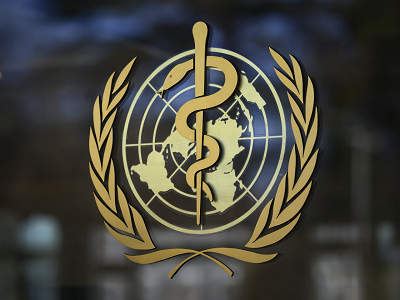Unit 9: Lesson 2: Organizations Governing Safety
Lesson 2: Organizations Governing Safety

Lesson 2: Organizations Governing Safety
In the United States, safety is regulated through several organizations and government departments, each concerned with other areas of health and safety. These organizations help provide safety information and guidelines for individuals, organizations, and society. While these US state and federal organizations generally focus on US health concerns, there are worldwide organizations that oversee various global and local health issues.
International Flag for the World Health Organization
The World Health Organization (WHO) is a United Nations organization concerned with international public health. WHO undertakes management tasks, including helping to coordinate efforts to contain infectious diseases by wedding programs to help reduce and eliminate contagious diseases such as HIV/AIDS, influenza, and malaria. They also promote and encourage safe vaccinations worldwide to help combat infectious and preventable diseases.
The Center for Disease Control and Prevention (CDC) is a US federal agency focusing on public health and safety. This agency is the national public health institute for the United States, and it provides information and guidelines for disease prevention and health. It works to help control and prevent infectious diseases such as influenza, measles, and smallpox and to help maintain and prevent non-infectious health issues such as obesity.
Another US federal agency that oversees health and safety issues is the Occupational Safety and Health Administration (OSHA). OSHA is part of the Department of Labor, and its mission is to provide safe working conditions within the US. To do this, OSHA creates and enforces safety guidelines for employers to reduce employee accidents and risks. Some of the regulations that OSHA deals with include handling hazardous materials, limits on exposure to chemicals, and requirements for using protective clothing and equipment.
Another government agency that handles work-related safety is the National Institute for Occupational Safety and Health (NIOSH). NIOSH is responsible for researching work-related injuries and safety and making recommendations to reduce injuries and deaths from these safety issues. The Occupational Safety and Health Act in 1970 created both OSHA and NIOSH to improve working conditions and make employees safer while working. To do so, NIOSH collects data about workplace accidents, injuries, and deaths, researches ways to reduce risks, and transmits its findings on products or services that can help workplaces stay safer and mitigate potential dangers to employees.
Finally, the Food and Drug Administration (FDA) is another US health agency focusing on food and drug safety. The FDA regulates and supervises the safety of food produced and sold in the United States, prescription medicines, dietary supplements, vaccines, and other related products. As such, the FDA has a vast influence on the types of medications available to treat illnesses and ensures that those medications (prescription or over-the-counter) are safe for patients.
In addition to these organizations and government departments that oversee healthcare safety, healthcare settings handle institutional safety aspects. In most cases, organizations work to interpret the safety rules and guidelines put forth by these agencies. Still, there may be instances where professional organizations or particular healthcare settings create their policies and safety regulations.
